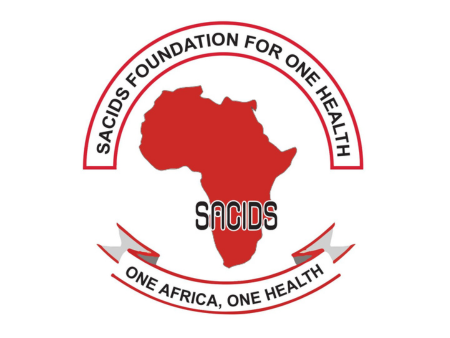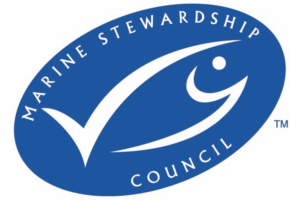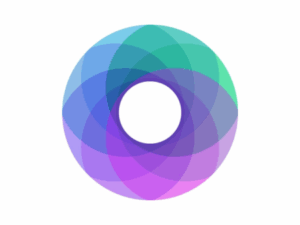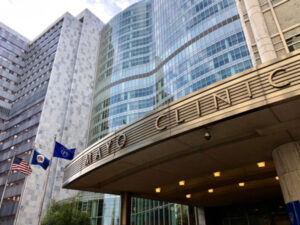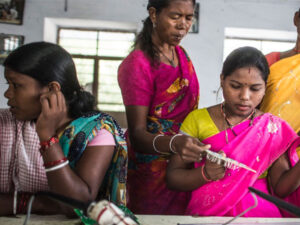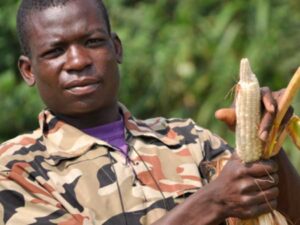The Southern African Centre for Infectious Disease Surveillance Foundation for One Health (SACIDS) is a ONE HEALTH Virtual Institute that links academic and research institutions in Southern and East Africa, which leverage technology to deal with infectious diseases of humans and animals within the African Ecosystem.
Mark Rweyemam and Esron Karimuribo of Southern African Centre for Infectious Disease Surveillance spoke with Jessica Kantor on December 8, 2023. Click here to read the full conversation with insights highlighted.
Jessica Kantor: Welcome, could you please start by introducing yourselves and describe the problem that you’re addressing and how are you responding to it?
Esron Karimuribo: I’m Esron Karimuribo working with the Southern African Centre for Infectious Disease Surveillance (SACIDS) Foundation For One Health. I lead the digital and data sciences program under the foundation.
Mark Rweyemamu: I’m Mark Rweyemamu, the director of SACIDS. You probably know we’ve been going since 2008, so I’m the rolling stone.
The problem that we are facing overall is the same that we started facing in 2008 and why we set up SACIDS, and that is a high burden of infectious diseases in people and in animals. What people in the economic north refer to as new emerging or emerging, quite often some of those will be diseases which you get all the time, but then of course also the completely new ones like we just had with the COVID-19 pandemic, we are not immune from those as well. You get that combination of what is there all the time, what is not there and other places, but continue to be there, and then when whatever comes from outside, what is really new is also a part of that. That’s one side.
On the other side you find the capacity to identify the problem. Diseases spread wider than need be. You find of course, for example, during COVID we had a webinar here, one of our colleagues from the DRC showed us a slide which was while there were three cycles of COVID ongoing, that means also the monkeypox, which to us are normal, but all of them are of pandemic nature and certainly very epidemic. That is what we face.
The solution we hope we contribute to is one, to develop the capacity of individuals, and from that we’ve produced quite a number of PhDs throughout Africa. We are trying to target the source of disease, tools we hear at the moment that can help us pick out problematic community levels, but also to enable us to pick up disease from animals before they get to human beings. That is our strategy and that is our burden. I leave Esron to continue on that.
Esron Karimuribo: Yes. Just adding to what Mark mentioned about a strategy or solution we actually have undertaken is community enhancing at the community level, but also enhanced by technology. In that regard, we have pioneered a champion design and development of local application in Tanzania called AfyaData, which has done wonders, especially locally in Tanzania, but also during COVID-19. We were quickly approached by colleagues from public health in Mozambique, so we actually provide support to enhance capture for COVID-19 cases in Mozambique.
Having that success story, this year we were approached by the Food and Agriculture Organization (FAO) control office in Guinea, Conakry, so we have also been approached to support deployment of the same app in Western Africa. Luckily, the FAO wanted to support using the same model because where we deployed the system at the epicenter of the Ebola outbreak in Guinea, actually the public health guides, so that’s an opportunity. The application can [monitor] both humans and animals. It is designed to either support human alone surveillance, animal surveillance alone, or combination under One Health approach.
Jessica Kantor: Okay, wonderful. You mentioned a couple of different countries that you’re working with, but overall what is the population of people that you’re serving and how do you engage with them directly?
Esron Karimuribo: In Tanzania, roughly we are talking about something like two million people. In Mozambique, we deployed it to one district, so population wise, 500,000. In Guinea the envisaged population is around 1.5 million. That can sum up to close to four million, five million plus.
Jessica Kantor: How are you engaging with the population? Are you going door to door? Are you working with hospitals? Are you working with community organizations?
Esron Karimuribo: That’s a very interesting question. Our strategy is to use an approach that is likely to be sustainable. We have developed from experience in Tanzania, which we modified in Mozambique and Guinea, the engagement strategy where we work with local people staying within that local population. We collaborate with the community leaders, sometimes traditional leaders, and also the government officials, first of all to recruit people who are likely to work within the community and they stay within the community, so we don’t impose a bottom-up approach. Then we build capacity for them, and then even for IT because the technology actually relies on IT support.
In Mozambique, you had to identify local IT people who could support the system, similarly for Guinea, and then we act as backstopping for the entire process so that in the case of a serious issue, then they will be able to get support. This has helped greatly because every country we go to, we have a variant of AfyaData. AfyaData Mozambique with a clear logo, which is separate from AfyaData Tanzania, and similarly for Guinea, so that we can have that local ownership.
Mark Rweyemamu: That tool that he was describing, that can be modified to configure it to do human health, animal diseases, and also animal disease and human diseases configured. It’s basically the same. They’re configured to do the concept, of course. It makes it through the One Health. That means there is another way that we keep going, You design to outsmart the pathogen. Later we’ll talk about some of the issues I’ve got with that.
We’re also now developing another variant that’s for detecting this problem here, and then identifying what it is. That was through COVID. A colleague was flying from China. It was, in a way, a scheme by using the small scale called nanopore for sequencing, for getting to know the nature of the pathogen which causes diseases, to configure it in a way where it can even be used on the back of a lorry or a pickup. Which means we can bring that kind of technology to the health station that we have.
Let me give you an example. Just after COVID earlier this year, there was an outbreak of hemorrhagic fever in the people of southeast Tanzania, the extreme southeast of Tanzania. Now, what comes to mind is Ebola. Tanzania has never had Ebola or Marburg. Tanzania has only just had Marburg in the top left side of the country, but there was Ebola in Uganda, Ebola in Congo. We were part of three institutions, the Public Health Laboratory, ourselves, and the government’s chemists. Very soon Public Health Laboratory said it’s not Ebola, it’s not Marburg, and then it wasn’t chemical, but our guys with that technology I was talking to you about were able to take to the next step where they actually discovered it was neither of those. It was actually leptospira.
Now, that sounds easy, but then it removes two burdens. An unknown hemorrhagic fever, nobody believes you, you say, “These people are hiding their disease. They don’t have the technology.” Secondly, given you know what it is, you can treat it, and in this case it was treated. Now, considering what we had done before in Guinea, as we’re referring to, we had one boy from the border towards the capital town that precipitated a national epidemic. That is the kind of war which was going on, but we were able to work with the others, and between us we were able to identify it. That’s a technology that you’re able to use that doesn’t depend on everything. To go to headquarters three days later, get there by bus, and then do a testing by which time we’re having problems.
Jessica Kantor: With that, had you already had a presence in that location so they knew that you would be helpful in identifying it, or did you hear about what was going on and then come in and say, “Hey, we can be helpful in this,” and then you were added into the groups that were working on it?
Mark Rweyemamu: We were approached because we had been working with the Ministry of Health during COVID, and we had trained them so we could collaborate with them. The chief medical officer just simply called who can help in those three streams, the Public Health Lab, if it’s a chemical, it’s a national chemist, and ourselves being recognized as having the expertise to analyze viruses. It turns out it was not a virus, we therefore could tell it is not a virus, but also could tell what it was.
Esron Karimuribo: Our technologies are effective at capturing events and communities. We have two more issues. First of all, with technology, what we actually promote is that data collected and geo-tagged, therefore on the dashboard you can tell the exact location where the event is happening, and that makes life very easy for people coming to do more investigation. The other important feature is with our experience in Africa, because in most areas actually not everyone would, for example, speak English, in some countries it’s French, so we allow that multilingual data collection so the app can be programmed in local languages and still collect the same information provided. The data collection tool is well-designed. It has that multi-linguality for that matter.
Jessica Kantor: What would you say makes your approach distinctive from others who are doing similar work in the same space?9+
Mark Rweyemamu: First of all, I think in the domain of our origin, we start early, while others are catching up. Secondly, right from the start, we set ourselves in our membership. We have government and academic institutions. In terms of these public good issues, public health and so on, we have people, for example, the National Institute for Medical Research. Their brief is to support government with science, so they’re part of us. The technology we’ve been talking about is located at University. Then because we’re working with the medical systems, we are not having to go through the bridges. We joined up to form a true One Health so that we can serve either sector as an obligation. We’re coming into a stage now where we feel we are not exploiting that advantage enough.
Jessica Kantor: Esron, did you have anything to add to that?
Esron Karimuribo: Just again to emphasize One Health. You asked about the unique nature. We know there’s some technologies which are sector-specific, and therefore support siloed information collection. As Mark mentioned right from the start, we were established to be One Health, to have One Health focus. This makes life easier because the technology is designed with that One Healthness in mind, and therefore makes it easy to share information digitally rather than manually, and also by this close working relationship, you get to have people from the environmental, human and animal health sectors working together. The technology makes working together and seeing each other easier, even if there is a critical emergency, you ask that kind of question, how were you approached, because yes, we had that experience working together so they know you have a local solution somewhere.
Jessica Kantor: Was that the original plan for the model, or did you get to that point after a lot of trial and error?
Mark Rweyemamu: No, it was by design. It’s starting from how we formed ourselves in 2008. From the beginning, we formed ourselves to pull universities and research institutions from the public health sector and the animal sector and we replicate that in every country where we operate. For example, COVID made it here. I like to think that we were helpful in the sense that we didn’t have to go through the bridges. People are not involved in this part. The government knows and they know we can switch to the required expertise. Of course, all the regulations are allowed, but being able to pick up the best is available because we’re operating in countries of resource. We think we’re using it efficiently, so there wasn’t any mission for the chief medical officer to ask us to contribute to the virology side, or for designing point of interest surveillance tools by the team of Esron in the veterinary establishment, but designed for the public health sector because we are so designed. That runs right through everything that we do. We design to be relevant nationally. Of course, within the constraints of our security, safety.
Jessica Kantor: What are some lessons that you learned from things that you tried that maybe didn’t work or things that you tried that you had to pivot with?
Mark Rweyemamu: We design ourselves around the idea that where there’s a problem in each of the sectors, you always have somebody from that sector [working on the problem]. That creates confidence. Then after that, of course, the people we work with, they take us on the basis of what we are able to do. For example, antimicrobial resistance. We work across public health and animal health, and then we’re able to [determine] what is affecting what. We always had a member of that sector within the team, I think that has helped us.
I mentioned early on, I think we’ve come into a stage where we could be more involved and effective. I think we sent you some pamphlet to see how we are trying to concentrate purely on the research side, and then develop a type of NGO, a type of social enterprise so that we can do much more of the interacting with the sector more quickly, more efficiently, without having to compromise between academic and pure research. Doing right like the NGOs do with the advantage that our units would be knowledge-rich because there is a knowledge base from the research and university into the operation side. That I think is a model which we see will enhance our effectiveness in the sense that since we are already accepted across the two sectors. Many of them probably think that’s the kind of service they want. When you talk about it, they say, “No. We want this.” But at the same time it also gives us the advantage of being able to do the science that is relevant.
Jessica Kantor: I have a follow-up question to that, but Esron, I just wanted to check in to see if you had anything to add for that question of what are some lessons that you guys have learned along the way through trial and error?
Esron Karimuribo: Yes. In the designing process, like what Mark mentioned, co-designing together because we mentioned the community-based participatory approaches. Right from the get-go we need to bring everybody who’s a key stakeholder into the process at the beginning. Bring in the community members, and therefore what you design, then they’re part of the process. It has been really very, very helpful. Conversely, you see others when they design on their own, they go to deploy for the community which is not aware of the process, and then sustainability becomes an issue. I think that was an important addition.
Mark Rweyemamu: It’s more than sustainability because I think it allowed us to design for purpose. I don’t know whether you know this gentleman called Mark Smolinski. He introduced us to a system called EpiHack, and that has been wonderful in design because you design with the users, with the experts, and then those who need it most from the community.
Jessica Kantor: Mark, in your answer you spoke a little bit about moving towards a systems level change. What do you think is needed from other actors and other partners in this space in order to create that systems level change that you’re working towards?
Mark Rweyemamu: The system which we’re thinking of is timely in the sense that now we are maturing one stream that is dedicated purely to research and research capacity development, PhDs and so on. People that can do high quality research. We found that in provisional service, we can do a lot more than we do now, but now the problem is using the same people. We’re now thinking and working towards getting a unit that is dedicated to translating what comes out of research into a product. What we call three P’s – product, policy, practice and providing services. This is backed up by knowledge and good design, but the weak link has always been outreach, because we are professors, so we don’t have that expertise.
Some of our products probably could have gone much wider than now, and we started learning that when we started collaborating with the African CDC, because what they want is providing the service Africa wide. You train them here, train them there, and every time we’re having to reconfigure who comes, who does not come. I think as we go forward, that would be necessary for us to have. It also of course helps to import a product in a project preparation mode. They also do projects for the university side, but it saves society and clients much more effectively. They can only have a dedicated unit operating like some kind of social enterprise. Not quite an NGO, but in that direction.
We’re looking at models like, for example, Virginia Tech, a model where they do provide services and work like NGOs in Africa and internationally. It’s an international center, but also they enable their research group to have professionals with their business to develop projects, so they’re able to produce projects quickly. It supports your research without them themselves, but much more it translates research into performance and provides knowledge-based services to national and regional authorities, or the private sector.
Jessica Kantor: You shared that really great example of impact, and then Esron, you spoke about the growth that you all are going through, and that you have gone through since 2008. How are you measuring success specifically, and what is the evidence that you’re making progress?
Esron Karimuribo: I think in terms of success to us, [an important metric] is the number of lives that were saved, that otherwise would have been lost if our intervention were not adopted. Mark mentioned the case of and a confirmation of hemorrhagic syndrome caused by bacteria, leptospirosis, in the southern part of Tanzania. Also, there is this issue of Marburg which happened in the northwestern part of the country. Even in Mozambique there is a publication which is already out that the community-based participatory surveillance enhanced by technology proved to be superior in terms of early capture of cases compared to facility-based surveillance systems.
Also, during the COVID-19 pandemic in Tanzania, one of the notable successes which we recorded, was to quickly digitize. We used to have that paper-based surveillance form you fill in digitally. Imagine in a situation under containment at the airport, several people queuing, filling it in, so we quickly digitized that system and developed what we call the Afyamsafiri, which was adopted by the Ministry of Health, and that saved a lot, we believe, in retrospect. We have not really quantified the impact, but logically it saved a lot because time to fill it in is shortened. By the way, what that platform was doing, 75 hours before you travel, you fill in all these routinely. The country where you’ve been, if you have experienced a fever and/or coughing within 24 hours of arrival. It was a matter of taking the thermal temperature, updating the system, and then there was an algorithm separating, “Yes, you are okay. Go to the left. We feel you are high risk. Go to quarantine.” That was absolutely very helpful, I would say.
Additionally, we did a pilot quick assessment on timeliness, because this is another metric we are interested in. Timeliness from, for example, occurrence to detection, detection to confirmation, confirmation to response. The initial small capture we made I think indicated a significant reduction from more than seven days to as low as two days. From point of occurrence to the point of support, point of response, this is additional information we had.
Jessica Kantor: Mark, do you have anything to add for success metrics, how you’re tracking success?
Mark Rweyemamu: Well, I think really the hemorrhagic fever in Southeast Tanzania, I think that was a game-changer. It’s small, but we live on a continent where one boy, because he wasn’t picked up and properly diagnosed, created an epidemic in West Africa. We were able to contribute to identifying the cause and then get proper treatment. If we had not said, “Well, it’s not Ebola, it’s not this,” then more people continue to die, and then before you know it, they’re blaming the country for hiding a disease. We know they have the data, they have no expertise, so it demoralizes the services. Most of all, there’s no contained problem, and that has also created a credibility to us. When asked to be part of the team, that’s the first one. The minister had the confidence to announce we have an unknown disease, but we’ll tell you very soon, because she had a team including us working on that, and the next day they were able to do that.
This is now becoming practice while creating confidence in public health. So much with the numbers, but also the ability to perhaps stop both the rumor, and more importantly, stop the deaths because the source was not diagnosed. Now the government can, between us and the others, set up that community practice in which in an emergency, they’d be asked to contribute and we are one of them. I think perhaps this one of our best articles from all this research and so on we do. When COVID came in, thanks to the Skoll Foundation, the confidence in us to ask us, to indicate to us, “Give us half a page and let’s think,” which we did half a page, by the end of the week, they already gave us some support. With that support, our teams in Tanzania and Mozambique, in Zambia and the DRC were working with the national authorities, and each country was at the time of either first in this case just identified, or identified within a week or during the operations when that was identified. I thought that is also major because traditional donors don’t work like that.
Of course after that, big traditional donors came, but we were able to enable the authorities to operate in confidence of what they’re handling, and also contain it until USAID, other big supporters came on board. Some people unfortunately died, but this practice certainly enhanced the confidence in the ability to attend to the problem and institute public health measures promptly.
Esron Karimuribo: Another success was actually increased trust and confidence from the government and the Ministry of Health. Let me qualify this. During the COVID-19 pandemic, one of our own, Professor Gerald Misinzo, who is a leading virologist, was appointed to be part of the presidential advisory committee on how to handle COVID-19. That to us is a pride because you can imagine up to the level of presidential, is a big success on our side. In addition, I was also appointed as part of the subcommittee for the epidemiological committee to advise the government on the same. Recently, again, I was part of One Health focal point under the food and agriculture organization for the early warning system, and last month I was in FAO to deliver my presentation to try to influence and develop the global framework to support the early warning system under animal health. I feel that these are some success stories.
Jessica Kantor: Thank you so much for sharing, both of you. I guess my last question would be, how do you see your work evolving over the next five years?
Mark Rweyemamu: How about you first, Esron? Becoming vice chancellor, how do you see the next five years?
Esron Karimuribo: The system and the holistic approach have these two strands. One, research, another, supporting social services. We feel this is a model that should be supported. We feel our role of supporting the communities, the government, will even be expanded not only nationally, but our wish is to see that we go at least regionally, and if not continentally, because it’s not the first time we’ve been approached by the African Union. We supported them to develop the event-based surveillance modules, and assisted them to pilot them globally, so with your trust and given the opportunity, we feel we can grow and actually expand to other countries, and if not, other regions on the continent.
Mark Rweyemamu: From my perspective, as I said, we started as a process sector. I think on the research capacity development, you’re doing very well. For example, we have schemes now from the World Bank, from the governments of Africa, and also for women. We now have PhD students from West Africa, Central Africa, East Africa, and Southern Africa, so we’re becoming Pan-African. There is also the side of research. We’re now in a phase where we finished one cycle. We are identified as a World Bank designated healthcare center for infectious diseases of humans and animals in East and Southern Africa.
They’re giving us encouraging indications in the government that we should plan for the second phase, and have a mechanism [by which we can work] with the professors and so on to alleviate a level of research to another level. That is the challenge of having some kind of social enterprise where we can also improve the service at cost and raise a bit of money to support research to create here. We’ve now been designated as a unique institute of Sokoine University on behalf of members. We are regional and will have a model that not only enhances the brain and the discovery and so on, but also is able to operate in society, to give back to society. I hope we can get that before I move on. Then these people, what they have to do is provide excellence on both sides. That’s part of the new ambition, otherwise it’s a job half done.
Jessica Kantor: This has been so enlightening. Thank you so much for taking the time to connect with me. Is there anything else that you all feel is important to add to this conversation?
Mark Rweyemamu: I think part of what I’ve just been talking about, gives us the opportunity to do more alliances on the delivery side. We’ve been practicing with the group in public health and we’ve written one proposal together to USAID. I begin to see, and I hope it’s also reciprocated, that the combination is producing a more solid approach. Although this is just Tanzania, these guys can go outside, but because we’re regional.
Also, the lesson I learned from our working with the African CDC, is that it perhaps requires some partnerships. I think that’s what we do, and that is also one of the reasons I want to run this as an entity, not just an offshoot, so that we can have ambitions. Of course, talent is not all over the place in a way, but because we have the knowledge base which is now settled, I think we can also contribute in a positive way on this side adding value in terms of a knowledge-based support. A lot of NGOs are experience-based. In this case we have a knowledge generation base that we can tap into, and those two not being one on top of the other.
Jessica Kantor: Wonderful. Thank you so much, both of you.
Click here to read the full conversation with insights highlighted.
Jessica Kantor is an independent journalist specializing in health, human rights, and social impact. Her work can be found in Fast Company, Healthcare Quarterly, The Las Vegas Review-Journal, and others. She is a living kidney donor.
* This interview has been edited and condensed.
Learn about other organizations leveraging technology for social innovation.

